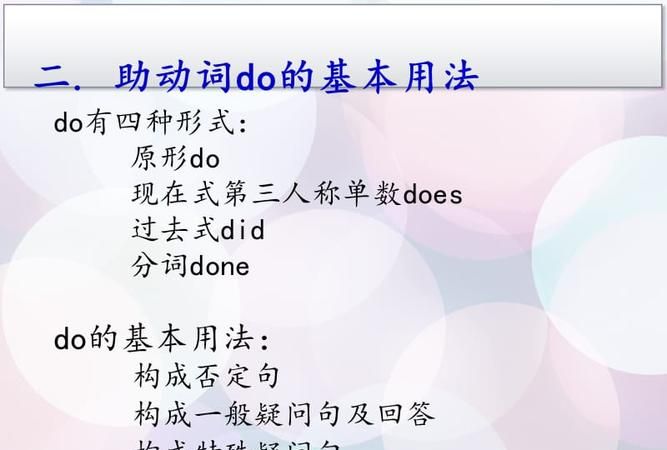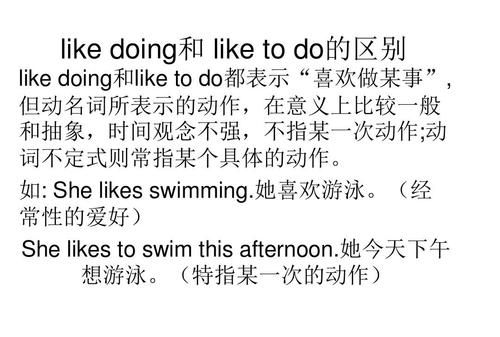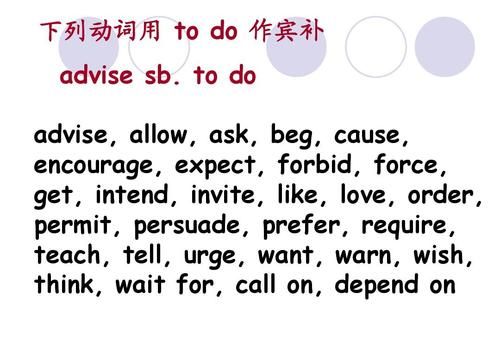本文目录
do sth by doing sth
一.含有ing句型:
1. carry on\keep doing 坚持做某事
2. practise doing sth. 练习做某事
3. keep sb. Doing 使某人一直做某事
4. enjoy doing 喜欢做某事
5. finish doing 完成做某事
6. be afraid of doing 害怕做某事
7. (sth)be worth doing 值得做
8. be busy doing 忙于做某事
9. how about doing//what about doing 做某事怎么样
10. spend some time (in)doing 花时间做某事
11. spend some money (in) buying 花钱做某事
12. feel like doing 想做某事
13. stop/keep/prevent … from doing 阻止某人做某事
14. thank sb for doing 感谢某人做某事
15. thanks for doing 感谢做某事
16. do some cooking/cleaning/reading/shopping/washing 做点饭、打扫一下卫生、读点书、逛逛街、洗洗衣服
17. go swimming/fishing/shopping/skating/boating 去游泳、钓鱼、逛街、滑冰、划船
18. mind doing 介意做某事
19. prefer doing … to doing… 比起做某事更喜欢做某事
20. can’t help doing 情不自禁做某事
21. have fun/difficulty/trouble/problem doing sth. 做某事有趣、有困难、有困难、有困难
22. waste time/money doing 浪费时间、钱做某事
23. instead of doing 代替做某事
24. miss doing 错过做某事
二、含有不带to的动词不定式句型:
1. had better (not) do sth. 最好(不)做某事
2. would you please (not) do sth. 你可以做某事吗?
3. why not do sth. 为什么不做某事?
4. why don’t you do sth. 为什么你不做某事?
5. Shall we do sth.? 我们要做某事吗?
6. let sb do sth. 让某人做某事
7. make/have sb. do sth. 使某人做某事
三、含有带to的动词不定式句型:
1. It’s time to do sth. 现在是做某事的时候了
2. It takes sb. some time to do sth. 做某事花了某人时间
3. tell/ask/want/encourage/invite/ sb. to do sth. 告诉、叫、想、鼓励、邀请某人做某事
4. Would you like to do sth.? 你想做某事吗/
5. It’s good/bad to do sth. 做某事好、不好
6. It’s good/bad for sb.to do sth. 某人做某事好、不好
7. be+adj.+enough to do sth. 足够+形容词做某事
8. sb. is ready to do sth. 某人准备好做某事
9. It’s+adj.+ for sb. to do sth. 做某事对某人+形容词(做这件事对你好)
10. It’s+adj.+ of sb. to do sth. 某人做某事+形容词 (你做这件事真好)
11. would like/love /decide/want/wish/to do sth. 想、喜欢、决定、想、希望做某事
12. would like/love sb. to do sth. 想、喜欢某人做某事
13. Prefer to do sth. rather than do sth. 宁愿做某事而不愿做某事
I prefer to stay at home rather than go out. 我宁愿呆在家里不愿出去
14. how/ when/where/whether to do sth 怎么、什么时候、在哪里、要不要做某事
15. can’t wait to do 迫不及待做某事
16. too … to do … 太怎么样而不能做某事
17. be afraid /ready/able/sure to do 害怕、准备、能够、确定做某事
18. seem to do 似乎做某事
四、既用带to的动词不定式又用ing形式的句型:
1.stop to do/ doing 停下来做另一件事 停止做某事
2.forget to do/ doing 忘记做某事 忘记做过某事
3.remember to do/doing 记住做某事 记得做过某事
4.go on to do/doing 继续做另一件事 继续做某事
5.like to do/doing 喜欢做某事(临时、长期)
6.love to do/doing 喜欢做某事 (临时、长期)
7.prefer to do/doing 更喜欢做某事 (临时、长期)
8.hate to do/doing 讨厌做某事 (临时、长期)
五、下列结构用带to的动词不定式和ing形式含义相同:
1.begin to do/doing 开始做某事
2.start to do/doing 开始做某事
3.continue to do/doing 继续做某事
六、既用不带to的动词不定式又用现在分词的句型:
用不带to的动词不定式强调动作的完成过程;用现在分词强调动作的进行状态。
1.hear sb do sth./doing 听见某人做某事 听见某人正在做某事
2.listen sb do sth./doing 听某人做某事 听某人正在做某事
3.look at sb do sth./doing 看某人做某事 看某人正在做某事
4.see sb do sth./doing 看见某人做某事 看见某人正在做某事
5.watch sb do sth./doing 观察某人做某事 观察某人正在做某事
6.notice sb do sth./doing 注意到某人做某事 注意到某人正在做某事
6.notice sb do sth./doing
不好意思刚刚断网了,借同学的电脑给你答了
对于初中来说这已经是很全的了,而且我已经全部翻译好了,你自己看看吧

英语句型中的do是什么意思
第一个是动词一般时 就是一般现在时 中间那个是动词进行时的用法 如果是BE doing sth 是现在进行时 作主语的话祈使句 也可用作非谓语动词 最后那个是动词不定式 一般是TO前有个动词 同时也可用作非谓语动词
麻烦采纳,谢谢!

英语中什么时候用to do什么时候用doing
1.下面接to do:
agree (同意); offer (提出); intend, plan (打算,计划); demand, ask (要求); promise (答应); help (帮忙); prepare (准备); decide (决定); refuse (拒绝);dare (敢于); choose (选择); wish,hope,want, expect (希望,想要); fail ;(不能;忘记); pretend (假装); manage (设法); determine (决心)。
2.下面接doing
admit 承认 appreciate 感激,赞赏 avoid 避免 complete 完成 consider 认为 delay 耽误 deny 否认 detest 讨厌 endure 忍受 enjoy 喜欢 escape 逃脱 prevent阻止 fancy 想象 finish 完成 imagine 想象 mind 介意 miss 想念 postpone 推迟 practise 训练 recall 回忆 resent 讨厌 resist 抵抗 resume 继续 isk 冒险 suggest 建议 face 面对 include 包括 stand 忍受 understand 理解 forgive 宽恕 keep 继续
admit to prefer…to be used to lead to devote oneself to object to stick to be busy look forward to to为介词)no good, no use, It's worth… as well as ,can't help , It's no use /good be tired of ,be fond of , be capable of , be afraid of
be proud of , think of / about , hold off , put off , keep on, insist on ,count on / upon, set about ,be successful in , good at , take up ,give up, burst out ,prevent … from…等等
还有一些特殊情况,没收进来。

为什么有些单词后面要加ed
这跟时态没关系
后面加do sth的是情态动词,如can will should等,这类词后面跟动词原形,时态变化就变情态动词。也有特殊如help sb do sth(帮助某人做某事)
至于to do和doing,就得一一单独记了,很难说有什么规律。
大多有固定搭配的都是to do,比如want to do(想做某事)
而有些不是固定搭配的就是doing,比如like doing(喜欢做某事)
to do和doing这两种情况的出现都是因为一个完整且正确的句子中,有且只能有一个谓语动词,比如上面两个例子里的want和like。相应的 后面出现的动词就要变成分词或介词短语,如上面的want和like后面的部分。
还有一些特殊情况如look forward to doing sth(期待做某事)
见的多了以后你就会有一种感觉了。

以上就是关于do sth to do sth语法 ,do sth by doing sth的全部内容,以及do sth to do sth语法 的相关内容,希望能够帮到您。
